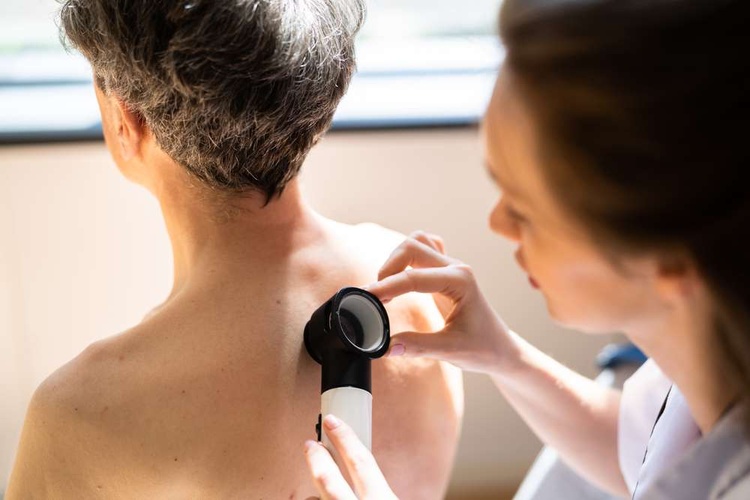Psoriasis Treatment Options - What’s Out There in 2025
Psoriasis is a chronic skin condition, characterized by red, itchy, scaly patches. It's not just a cosmetic issue but can significantly impact one's quality of life. Understanding triggers and treatment options is key to managing symptoms effectively. With advancements in care, staying informed could mean the difference between discomfort and relief. Don't let the latest breakthroughs pass you by.

Understanding Psoriasis: An Overview of the Condition
Psoriasis is an autoimmune condition where the immune system triggers skin cells to multiply up to 10 times faster than normal. This rapid turnover causes cells to build up on the skin’s surface, forming the characteristic plaques and scales. The condition isn’t merely cosmetic—it’s a systemic inflammatory disease that can affect multiple body systems. The most common type, plaque psoriasis, accounts for about 80-90% of cases, but other variants include guttate, inverse, pustular, and erythrodermic psoriasis. Each type presents differently and may respond to treatments in varying ways, making personalized approaches essential.
How Does Psoriasis Start and What Triggers Flare-ups?
Psoriasis typically develops due to a combination of genetic predisposition and environmental triggers. Those with a family history of psoriasis have a significantly higher risk of developing the condition. The initial onset often follows a triggering event such as stress, skin injury, certain medications, or infections—particularly streptococcal throat infections. Common triggers for flare-ups include:
-
Stress and anxiety
-
Skin injuries or sunburn
-
Certain medications (beta-blockers, lithium, antimalarials)
-
Infections, especially streptococcal
-
Cold, dry weather
-
Alcohol consumption
-
Smoking
-
Hormonal changes
Understanding personal triggers is crucial for managing psoriasis effectively, as avoiding these factors can help prevent flare-ups and complement treatment strategies.
Symptoms and Signs of Psoriasis to Watch For
Recognizing psoriasis symptoms early can lead to faster intervention and better management. The hallmark signs include:
-
Red, inflamed patches of skin covered with silvery scales
-
Intense itching, burning, or soreness
-
Dry, cracked skin that may bleed
-
Thickened, pitted, or ridged nails
-
Swollen and stiff joints (in psoriatic arthritis)
Symptoms can vary widely in severity and location. While some experience mild patches on elbows and knees, others may have widespread plaques covering large body areas. The psychological impact shouldn’t be underestimated, as visible symptoms can lead to reduced quality of life, depression, and social isolation. In 2025, healthcare providers increasingly recognize the importance of addressing both physical and emotional aspects of the condition.
Traditional Treatment Options for Psoriasis
Conventional psoriasis treatments remain the foundation of care for many patients in 2025, particularly for mild to moderate cases. These approaches include:
-
Topical treatments: Corticosteroids, vitamin D analogs (calcipotriene), retinoids (tazarotene), and calcineurin inhibitors remain first-line treatments for localized psoriasis. Newer formulations have improved absorption and reduced side effects.
-
Phototherapy: Controlled exposure to UVB light or PUVA (psoralen plus UVA) continues to be effective for moderate to severe cases. Modern phototherapy units now offer more precise dosing and targeted treatment areas, minimizing UV exposure to unaffected skin.
-
Systemic medications: Traditional oral medications like methotrexate, cyclosporine, and acitretin are still prescribed for severe cases, though their use has declined with the rise of biologics. Improved monitoring protocols have made these options safer for long-term use when appropriate.
These traditional approaches continue to evolve with enhanced delivery systems, combination protocols, and better safety profiles than their earlier counterparts.
Breakthrough Biologic and Targeted Therapies in 2025
The landscape of psoriasis treatment has been revolutionized by biologics and targeted therapies, which have seen remarkable advancement by 2025. These treatments target specific pathways in the immune system rather than suppressing it broadly:
-
Next-generation TNF-alpha inhibitors with improved efficacy and convenience
-
IL-17 inhibitors with enhanced safety profiles and longer intervals between doses
-
IL-23 inhibitors offering sustained clearance with fewer injections per year
-
TYK2 inhibitors providing oral options with biologic-level efficacy
-
Dual-target biologics addressing multiple inflammatory pathways simultaneously
Perhaps the most exciting development is the emergence of personalized medicine approaches. Genetic and biomarker testing now helps predict which specific biologic will work best for individual patients, reducing the trial-and-error process that previously characterized treatment selection.
Emerging Therapies and Holistic Approaches for 2025
The psoriasis treatment landscape of 2025 features several innovative approaches that complement traditional and biologic therapies:
-
Microbiome-based treatments that address gut-skin connections through probiotic formulations
-
JAK inhibitors in topical forms with fewer systemic side effects
-
Advanced light therapy devices for home use with telemonitoring capabilities
-
Gene therapy trials showing promising results for long-term remission
-
AI-driven applications that help predict flares and optimize treatment timing
Additionally, integrative approaches combining conventional treatments with lifestyle modifications have gained substantial evidence backing. Anti-inflammatory diets, stress management techniques, and regular physical activity are increasingly prescribed alongside medications. Research shows that patients following such combined approaches experience fewer flares and better quality of life than those using medications alone.
| Treatment Category | Average Cost Range (2025) | Treatment Frequency | Insurance Coverage |
|---|---|---|---|
| Topical Treatments | $30-$500 per month | Daily application | Usually covered with copay |
| Phototherapy | $3,000-$5,000 for initial setup; $100-$300 per session | 2-3 sessions weekly for 8-10 weeks | Often partially covered |
| Oral Systemics | $200-$3,000 per month | Daily or weekly | Usually covered with prior authorization |
| Biologics | $20,000-$50,000 per year | Every 1-3 months | Often covered with significant copays |
| Home Light Therapy | $300-$1,000 one-time cost | 3-5 times weekly | Rarely covered |
Prices, rates, or cost estimates mentioned in this article are based on the latest available information but may change over time. Independent research is advised before making financial decisions.
Managing Psoriasis: Practical Lifestyle Considerations
Beyond medical treatments, managing psoriasis effectively involves several lifestyle considerations. Skin hydration remains crucial—advanced moisturizers with ceramides and hyaluronic acid help maintain skin barrier function and reduce scaling. Gentle skincare routines avoiding harsh soaps and excessive scrubbing can prevent irritation that triggers flares.
Dietary modifications show increasing evidence of benefit. Anti-inflammatory diets rich in omega-3 fatty acids, colorful fruits and vegetables, and low in processed foods may help reduce inflammation. Some patients report improved symptoms after identifying and eliminating specific dietary triggers, particularly gluten and dairy for susceptible individuals.
Regular exercise contributes to weight management—an important factor as obesity is linked to more severe psoriasis and reduced treatment response. However, those with psoriatic arthritis may need adapted exercise regimens that avoid stressing affected joints.
With comprehensive management approaches combining medical treatments, lifestyle modifications, and psychological support, most patients with psoriasis can achieve significant improvement in symptoms and quality of life in 2025.
This article is for informational purposes only and should not be considered medical advice. Please consult a qualified healthcare professional for personalized guidance and treatment.




